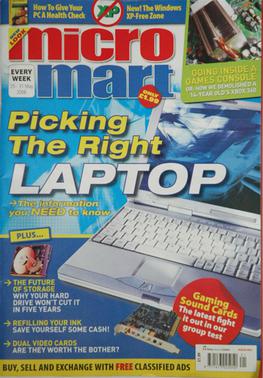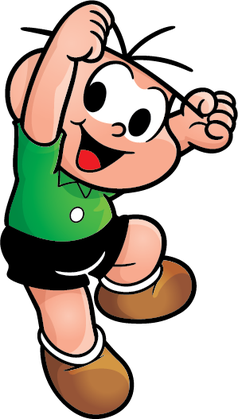
Your Sinclair, or YS as it was commonly abbreviated, was a commercially published and printed British computer magazine for the Sinclair range of computers, mainly the ZX Spectrum. It was in circulation between 1984 and 1993.

GamePro was an American multiplatform video game magazine media company that published online and print content covering the video game industry, video game hardware and video game software. The magazine featured content on various video game consoles, personal computers and mobile devices. GamePro Media properties included GamePro magazine and their website. The company was also a part subsidiary of the privately held International Data Group (IDG), a media, events and research technology group. The magazine and its parent publication printing the magazine went defunct in 2011, but is outlasted by Gamepro.com.

Grupo Abril is a Brazilian media conglomerate headquartered in São Paulo. The company is the holding company of Editora Abril, which publishes the weekly newsmagazine Veja.

The Brazilian edition of Playboy is a local franchise of Playboy magazine. Established in 1975 by Editora Abril, it was only the fourth overall international version of the magazine, following Germany, Italy and France.
Info Exame was a high-popular Brazilian technology magazine. Its name was Exame Informática initially, a reference to its creation as the technology supplement for Exame, a business magazine. It was popular with technology non-experts because of its simple-language approach to IT-related topics. The headquarters was in Sao Paulo.
Games World of Puzzles is an American games and puzzle magazine. Originally the merger of two other puzzle magazines spun off from its parent publication Games magazine in the early 1990s, Games World of Puzzles was reunited with Games in October 2014.

Micro Mart was a weekly computer magazine published in the United Kingdom by Dennis Publishing Ltd. As of 2015, it had a circulation of 5,422. In a letter to subscribers in December 2016 it was announced that the magazine would cease publication with issue No 1445 : "After 30 amazing years of telling it like it is, Micro Mart magazine is logging off."

Jimmy Five, known as Cebolinha in Portuguese, is one of Monica and Friends' main characters. He was created in 1960, at first as a support character for Franklin and Blu who the following year became the protagonist of his own series of newspaper strips, which was later replaced by the character Monica in the 70s. Currently Jimmy Five has his own printed comic book, called Cebolinha, which was first released in 1973.

Chuck Billy is the main character from Chuck Billy 'n' Folks, created by Brazilian cartoonist Mauricio de Sousa. He is the biggest work of Mauricio after Monica and Friends, and he has his own cartoon magazine and even some VHS and DVD movies, following Monica's steps.

Praia do Cassino is the world's longest sea beach and is located in the southernmost of the Brazilian coast, on the South Atlantic Ocean, in the Rio Grande do Sul state. It is the longest uninterrupted sandy seashore in the world, with various sources measuring it from 212 kilometres (132 mi) to 254 kilometres (158 mi), stretching from the Molhes (breakwaters) at the entrance of the Rio Grande seaport in the north to the mouth of the Chuí Stream, on the border with Uruguay, in the south.

Politikin Zabavnik is a popular magazine in Serbia, published by Politika Newspapers and Magazines.
Placar is a monthly Brazilian sports magazine. Its first edition was issued by Editora Abril. on March 20, 1970, and since then it has become the most successful sports publication in Brazil, even though it focuses fully on football. It is currently published by Editora Abril.
Igromania is a Russian video game website and formerly a magazine.

Chuck Billy 'n' Folks is a Brazilian comic strip and part of the Monica's Gang comic book series, created by Mauricio de Sousa.

Superinteressante, or Super, is a Brazilian science and culture magazine. Super employs simple language to explain complex topics to the general public. It is published monthly since September 1987 by Editora Abril and competes with Galileu, a magazine published by Editora Globo that follows a similar style.

Tina's Pals is a Brazilian comic strip series, part of the Monica's Gang series, created in 1970. The stories are aimed at a more teenage group of readers, rather than the kids who would read other Mauricio de Sousa's works and thus center around teenagers. However, Mauricio prefers not to mention drugs, sex, alcoholic drinks, or other similar subjects, which are very popular among teenagers. Instead, the strips are written with themes related to school or university, dating, problems with parents, etc.

Tormenta is a Brazilian fantasy role-playing game campaign setting that has been played at various times with the rules system for Advanced Dungeons & Dragons (AD&D), Runequest, D20 System or 3D&T. It was created in 1999 by Marcelo Cassaro, Rogério Saladino, and J. M. Trevisan as a special booklet to commemorate Issue #50 of the magazine Dragão Brasil. It has been published by Jambô since 2005, is one of the most popular role-playing games published in Brazil, and has spun off related materials such as comic books, novels and a video game.
Quo is a monthly Spanish-language pop-science magazine that informs about science through thinking and entertainment. It contains articles pertaining to health, sex, ecology, technology, nutrition, psychology and human life. Its content has the capability to answer all the basic doubts a person might have about the world they live in. The magazine was created in Spain by the Hachette Filipacchi publisher. It was released in Spain in 1995. Its first director was Oscar Becerra and the art director was Pancho Guijarro. Aside from Becerra and Guijarro, Juan Caño, vice president editor of Hachette, was highly involved in the creative development of the publication. A few months later Grupo Zeta released CNR in Spain, a magazine whose similarities to Quo were extraordinary. Hearst Magazines bought Hachette Filipacchi's Spanish magazines in 2011.
Roberto F. Civita was a Brazilian businessman and publisher. Born in Italy, he emigrated at the age of two with his family to New York in 1938 to escape effects of the Race Laws. They moved again to Brazil in 1949, where his father Victor Civita founded Editora Abril, a publishing house.
Ação Games was a Brazilian magazine specialized in video games that circulated from 1991 to 2002.











